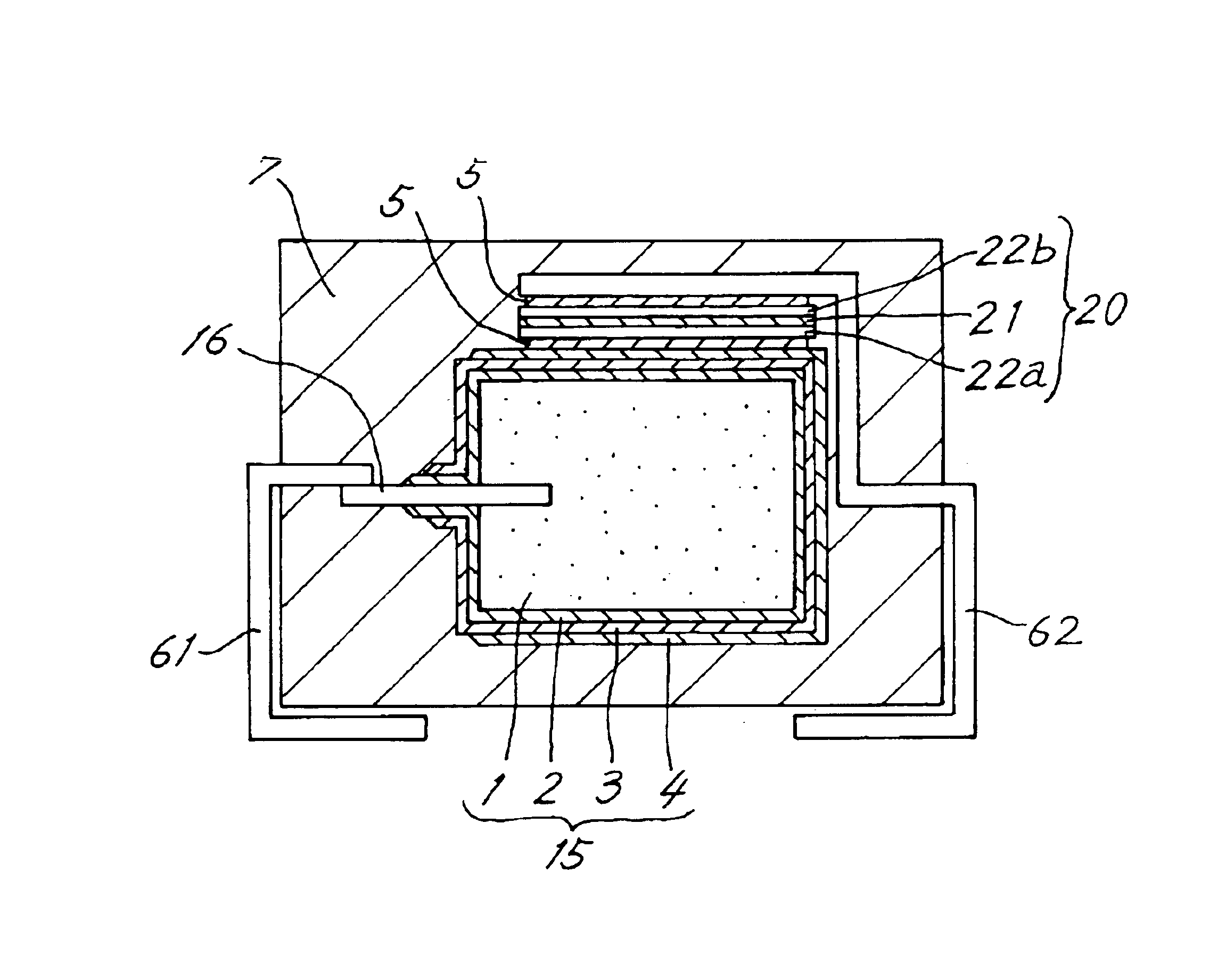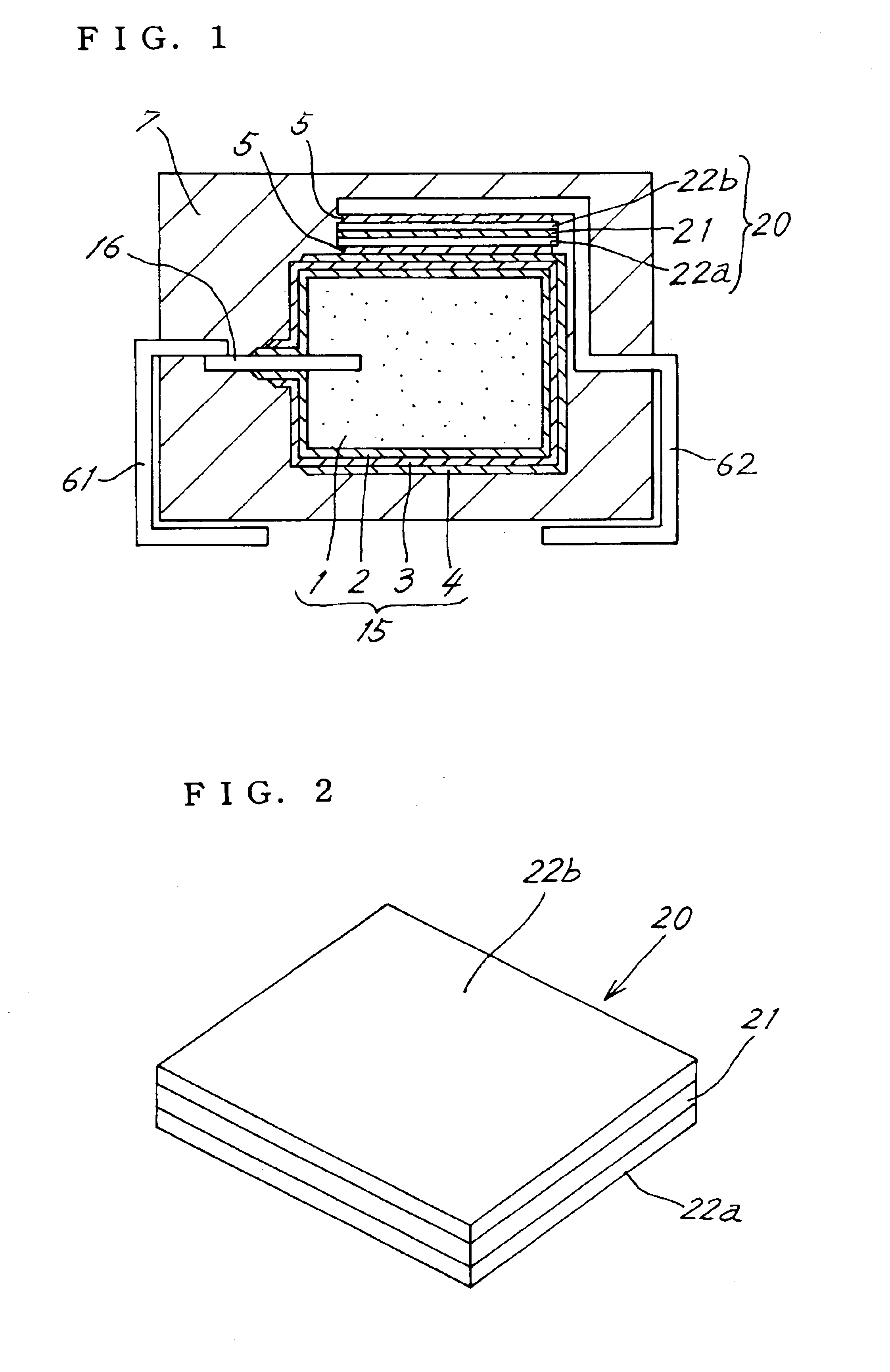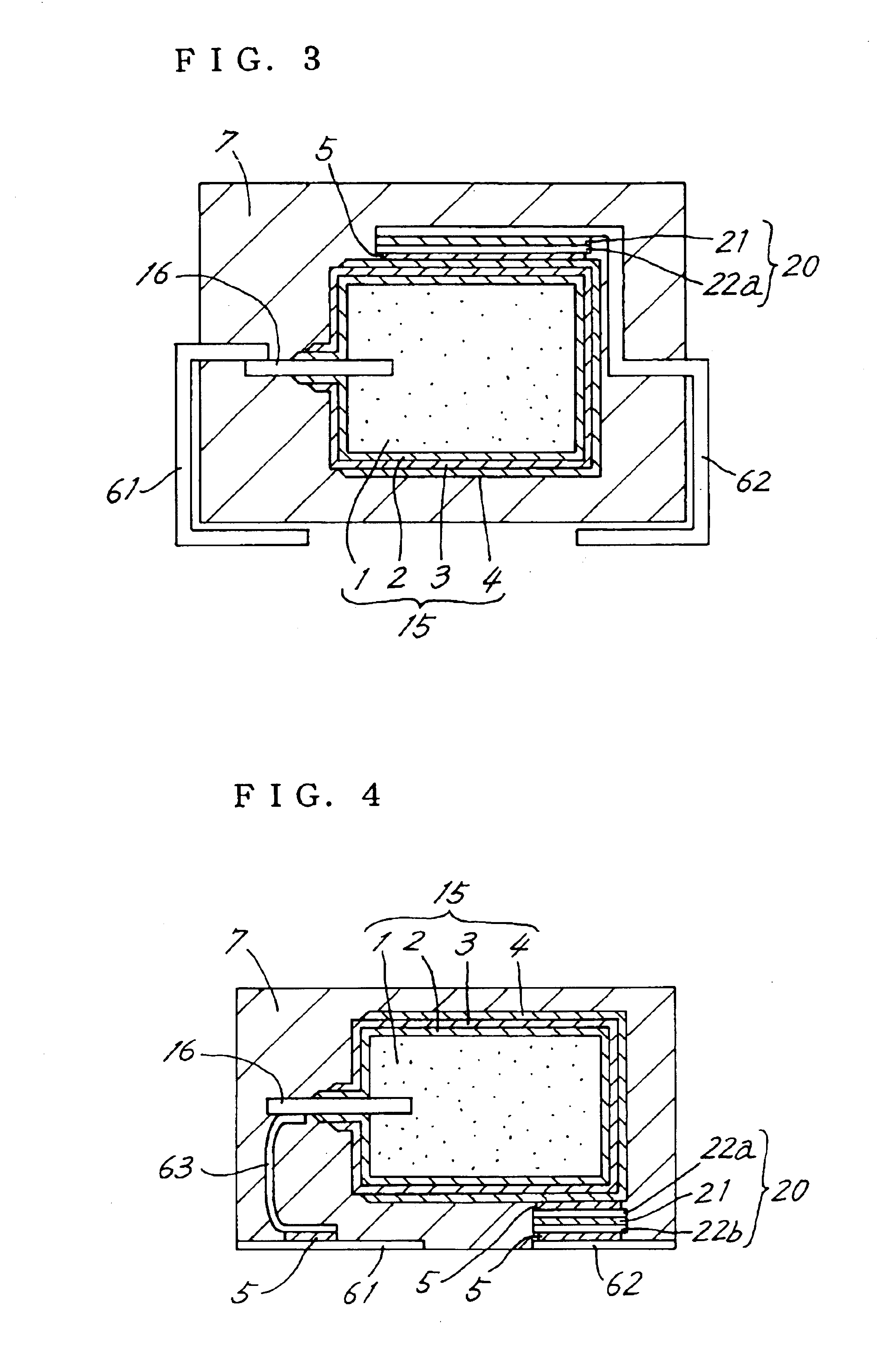Solid electrolytic capacitors
a technology of solid electrolyte and capacitor, which is applied in the direction of fixed capacitor details, variable capacitors, fixed capacitors, etc., can solve the problems of self-generation of heat, prone to fumes or fires, and solid electrolyte layers are easy to produce fumes or ignition, etc., to achieve convenient fabrication, easy to handle, and easy to provide
- Summary
- Abstract
- Description
- Claims
- Application Information
AI Technical Summary
Benefits of technology
Problems solved by technology
Method used
Image
Examples
first embodiment
(First Embodiment)
[0034]FIG. 1 is a view in vertical section of a solid electrolytic capacitor of first embodiment of the invention. A capacitor element 15 comprises an anode body 1 having an anode leading member 16 in the form of a rod and embedded in the body 1. The anode body 1 is a substantially rectangular parallelepipedal sintered body of valve metal. According to the present embodiment, a sintered body of tantalum is used as the anode body 1, whereas a sintered body of aluminum, niobium, titanium, zirconium or the like may alternatively be used. Further according to the present embodiment, a tantalum wire is used as the anode leading member 16.
[0035]The sintered body is immersed in an aqueous solution of H2PO4 and subjected to an anodic oxidation treatment, whereby a dielectric coating layer 2 is formed over the surface of the anode body 1. The anode body 1 resulting from the anodic treatment is subjected to a polymerization treatment to thereby form a solid electrolyte layer...
second embodiment
(Second Embodiment)
[0043]FIG. 3 is a view in vertical section and showing a solid electrolytic capacitor of second embodiment of the invention. The second electrode member 22b included in the first embodiment is omitted from the present embodiment, and the current control layer 21 is held between the first electrode member 22a and the cathode terminal member 62. The cathode terminal member 62 serves the function of the second electrode member 22b of the first embodiment. In other words, the cathode terminal member 62 partly serves as the second electrode member 22b shown in FIG. 1. Because of this construction, the solid electrolytic capacitor has a smaller number of components. If the first electrode member 22a, current control layer 21 and cathode terminal member 62 are prepared in the form of an element separate from the capacitor element 15, the process for fabricating the capacitor can be shortened.
[0044]Since it is desirable to sandwich the current control layer 21 between ele...
third embodiment
(Third Embodiment)
[0045]FIG. 4 is a view in vertical section and showing a solid electrolytic capacitor of third embodiment of the invention. According to this embodiment, the anode terminal member 61 and the cathode terminal member 62 are each in the form of a flat plate, and are positioned in a substantially same plane beneath the packaging resin portion 7 and spaced apart from each other. The current control means 20 is disposed under the anode body 1. The cathode terminal member 62 is disposed beneath the current control means 20. The first electrode member 22a of the current control means 20 is joined to the lower surface of the anode body 1 with the electrically conductive adhesive 5. The second electrode 22b is joined to the upper surface of the cathode terminal member 62 with the conductive adhesive 5.
[0046]The anode leading member 16 extends generally horizontally from the anode body 1, and the anode terminal member 61 is disposed under the anode leading member 16. The anod...
PUM
| Property | Measurement | Unit |
|---|---|---|
| melting point | aaaaa | aaaaa |
| temperature | aaaaa | aaaaa |
| temperature | aaaaa | aaaaa |
Abstract
Description
Claims
Application Information
 Login to View More
Login to View More - R&D
- Intellectual Property
- Life Sciences
- Materials
- Tech Scout
- Unparalleled Data Quality
- Higher Quality Content
- 60% Fewer Hallucinations
Browse by: Latest US Patents, China's latest patents, Technical Efficacy Thesaurus, Application Domain, Technology Topic, Popular Technical Reports.
© 2025 PatSnap. All rights reserved.Legal|Privacy policy|Modern Slavery Act Transparency Statement|Sitemap|About US| Contact US: help@patsnap.com



